Thiruvananthpuram-kari (A Woman from Thiruvananthpuram)
Malayalam is my mother tongue and I consider myself almost fluent in it. Unlike the generation today in Kerala, where Malayalam is mixed with English and called as Manglish, I can speak better. All thanks to the two and half months we stayed in Kerala during every summer vacation. I even taught myself to read Malayalam with some help from aunts and cousins. I was proud of my language skills till I got married almost 19 years ago to my husband from Central Kerala, Kottayam.
familiar with it as it is distinctly different. But Kottayam was a different ballgame. Kottayam is the
house of major publications like Malayala Manorama, Mangalam, Mathrubhumi and many printing
presses like DC Books. The Malayalam written language is closest to Kottayam dialect. Further research
informed me that though there are 3 dominant dialects in Kerala, it can be further divided into 12 more
familiar ones. Within them, there are further religious and cultural divisions. Well, I’ll keep history aside
and tell you what happened when I landed at my matrimonial home.
could not understand what the husband was saying. And it was worse to understand his relatives who
had come from Kerala with an uncorrupted language. They (as in Kottayam-kaars) use complete words
with clear pronunciation. Unlike them, we (Thiruvananthpuram-kaars) loved to elongate our words and
give it a lilt. For example, they will say ‘de kando’ which means ‘see’ with no fuss. But we will say it as
‘Diey KandO..oo’. For saying ‘What’ they use ‘Enna’ whereas we say ‘Endha’ or ‘Endhera’. In Kollam
they say ‘Endhuva’. But Kollam is another dialect which I noticed only after my encounter with
Kottayam.
smirks given by my husband when visiting my hometown and someone asks my baby’s name. Followed
by how many ‘Pullara’ I have? They call children as ‘Pillere’.
‘Dendey’. We also have a tendency to use the plural instead of singular for everything. Like someone
from my region would enquire about my job as ‘Jwollikal’ instead of saying ‘Joli’ as in Angelina Jolie.
This dialogue was even used by Shah Rukh Khan in Chennai Express when he meets a Mallu truck driver.
For ‘wages’, we say ‘Koolikal’ instead of plain boring ‘Kooli’.
home. When he got the ground nuts out I understood that we used a different name for the same
thing. They call ground nuts as ‘Kadala’ while we call it as ‘Kappalandi’. He promptly informed me that
is what they call cashew nuts. Are you nuts? I asked. We call them ‘Kashu-andi’ which is a corrupted
version of Cashew nuts. I asked him what do they then call ‘Kadala’ which in our language meant
‘Grams’. They call it also as ‘Kadala’.
words for different items. We are closer to the home of cashew nuts and therefore, our word is the
correct one. That is an unresolved one and I refuse to change the words I use.
Over the years, I learnt to understand the Kottayam dialect and I could notice the nuances now. I
prided myself on upgrading my Malayalam skills. I could use their dialect comfortably when I am in
Kottayam. Or so I thought.
promptly went to her mom asking, ‘Why is mami speaking like this? She talks different.’ That’s when I
heard my sister-in- law telling her, ‘Mami is a Thiruvananthpuram-kari. So, she speaks with that accent.’
And I realized, I should just be myself and use the language which I belong to. After all, it is my identity,
isn’t it?








